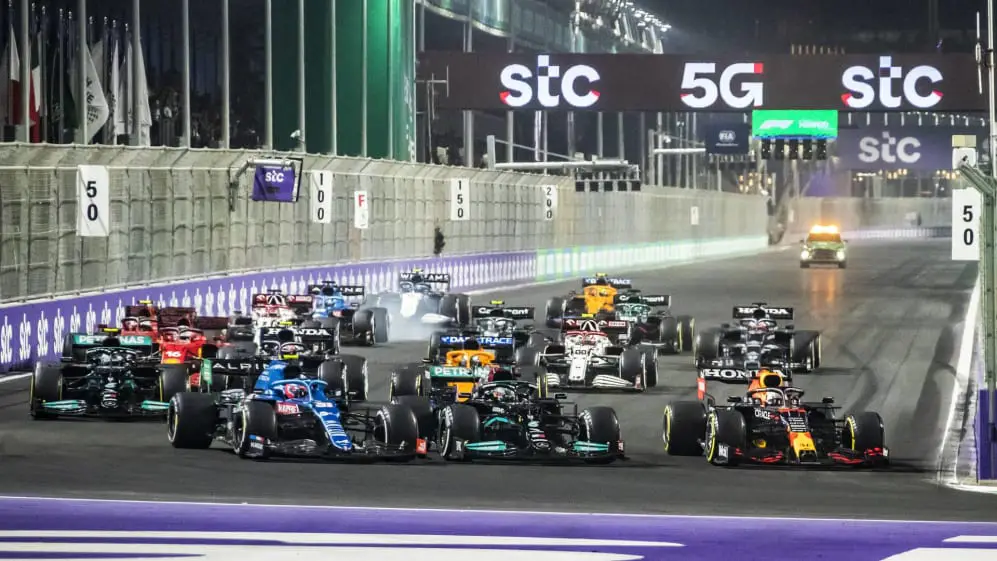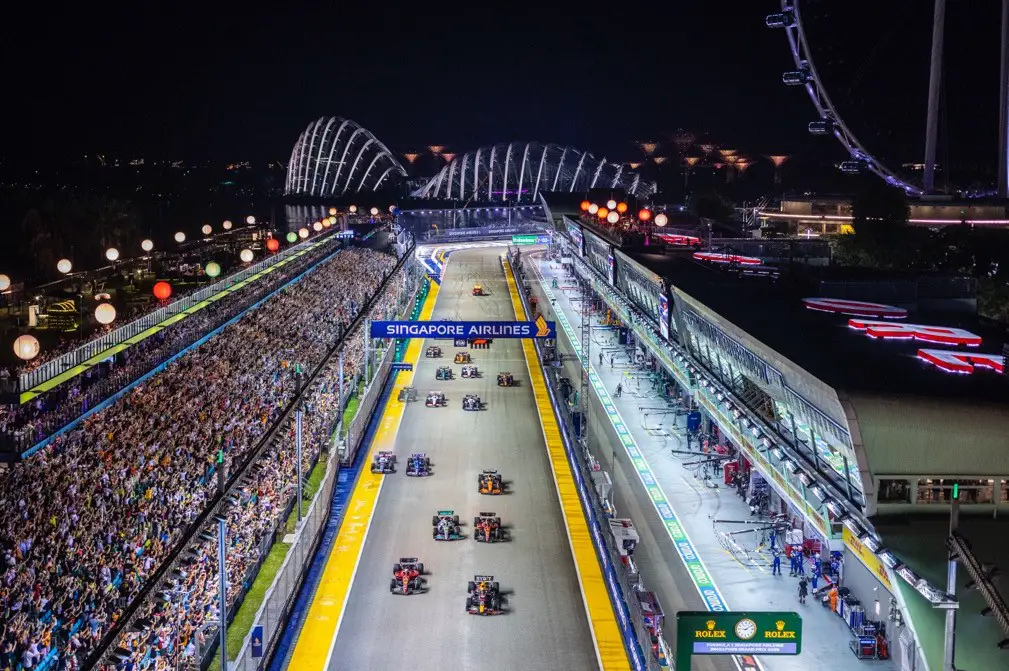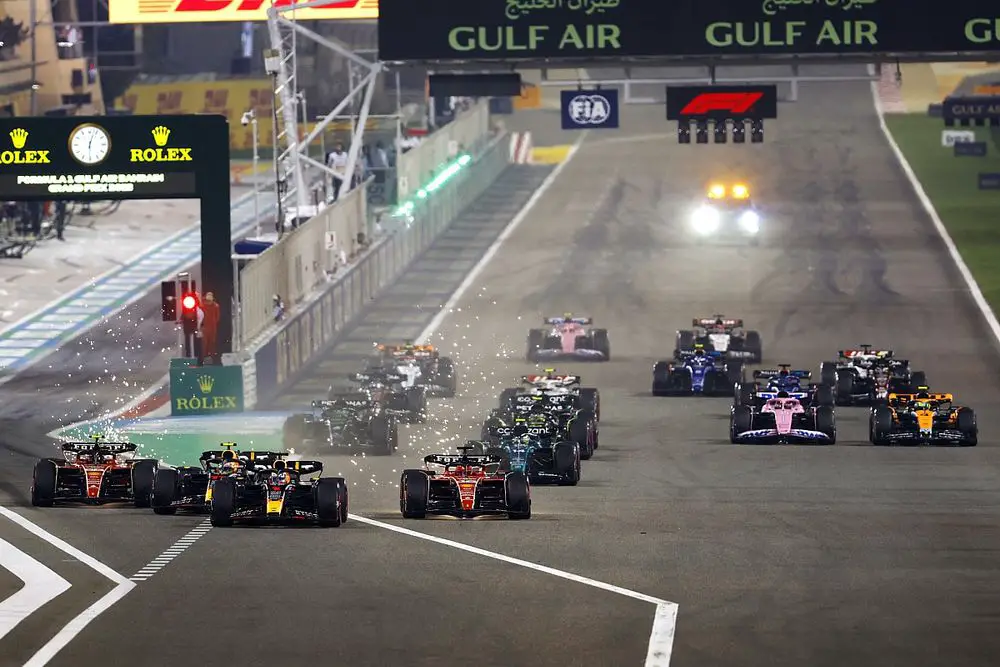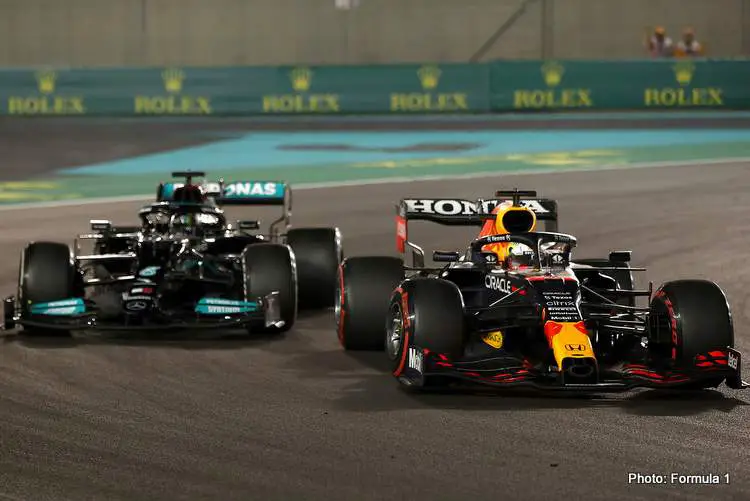Experience the thrill of speed under the moonlight as we delve into the world of night races in Formula 1. The shimmering lights casting a mesmerizing glow have made these races the epitome of adrenaline-fueled excitement.
Picture the roaring engines, the screeching tires, and the skilled drivers navigating the twists and turns with precision and finesse. In this article, we explore the magic that envelops the track as darkness falls, revealing a spectacle like no other.
Discover how the ingenious technology behind the floodlights creates an otherworldly ambiance. They illuminate every twist and turn in a breathtaking display. Join us as we uncover the allure and allure of night races.
The combination of skill, speed, and spectacle intertwine, captivating audiences around the world. Get ready to be transported into a world where the night sky becomes a canvas for motorsport’s most thrilling battles.
Races F1 – The History and Evolution of Night Races
Night races have a rich history in Formula 1, dating back to the inaugural Singapore Grand Prix in 2008. The decision to host a race under the lights was met with skepticism initially. It soon became evident that the allure of nighttime racing created a unique spectacle.
As other circuits followed suit, night races became a regular feature on the Formula 1 calendar. They add an extra layer of excitement to the sport.
The allure and excitement of night races extend beyond the novelty of racing in the dark. The vibrant city backdrops, illuminated by thousands of lights, create a stunning visual experience for both fans and drivers. The contrast between the darkness and the bright lights of the circuit adds to the sense of drama. It intensifies the emotions of both the drivers and the spectators.
The atmosphere at night races is unparalleled. The floodlights that illuminate the track create an almost magical ambiance, enhancing the sensory experience for everyone involved.
The engines roar, the screeching of tires, and the sparks as cars navigate the corners are amplified at night. Night races have a way of captivating audiences, drawing them into the action, and creating lasting memories.
Races F1 – Unique Challenges Faced by Drivers in Night Races
Night races present a unique set of challenges for drivers. The darkness can make it difficult to judge distances and braking points, testing their skill and precision to the limit. The glare of the floodlights can also create shadows and reflections, further adding to the complexity of the race.
Drivers must rely on their instincts and experience to navigate the track with confidence. They often pushing themselves to the edge of what is physically possible.
Visibility is a crucial aspect of racing, and night races require special attention to ensure safety. The lighting systems used in Formula 1 are designed to provide optimal visibility for both drivers and spectators. High-intensity floodlights are strategically positioned around the circuit to eliminate shadows and provide consistent illumination.
The lighting must be carefully calibrated to avoid glare and ensure that drivers can see every detail of the track.
The physical demands on drivers during night races are also worth noting. The races often start in the evening and finish late at night. This means that drivers have to maintain focus and concentration for an extended period.
The combination of the mental and physical strain, along with the unique challenges of racing in the dark, makes night races a true test of skill and endurance.
Races F1 – The Significance of Lighting Systems in Night Races
The lighting systems used in night races play a crucial role in creating a safe and visually stunning environment. The technology behind these lighting systems has evolved significantly over the years. It allows for better control and precision in illuminating the track.
One of the key considerations in designing a lighting system is the color temperature of the lights. The lights must replicate daylight as closely as possible to ensure accurate visibility for drivers. Special lamps and filters are used to achieve the desired color temperature, creating a natural and consistent lighting environment.
Another important aspect is the positioning of the floodlights. The strategic placement eliminates shadows and provide uniform illumination across the entire track. Specialists carefully calibrate the angle and intensity of the lights. This ensures that drivers have clear visibility of the track and any potential hazards.
Furthermore, the lighting systems must be able to withstand the challenging conditions of a race. They need to be weatherproof, durable, and able to withstand the vibrations and intense heat generated by the cars. The technology used in modern lighting systems has improved significantly, allowing for more efficient and reliable illumination.
Races F1 – Famous Night Race Circuits in Formula 1
Several circuits have become iconic venues for night races in Formula 1. Let’s take a closer look at some of these legendary tracks:
Races F1 – Saudi Arabia

The Saudi Arabian Grand Prix is one of the newest and most exciting additions to the Formula One calendar. It is also one of the most challenging and demanding races for the drivers, as they have to navigate a fast and narrow street circuit under the artificial lights of Jeddah. In this chapter, we will take a closer look at what it takes to drive an F1 car in this spectacular night race.
The Jeddah Corniche Circuit is the second-longest track in F1 history, with a length of 6.174 km and 27 corners. It is also one of the fastest, with an average speed of over 250 km/h and a top speed of over 320 km/h. The circuit features several long straights, tight turns, and elevation changes, as well as some unique elements such as a double hairpin and a banked curve. The track layout is designed to create thrilling overtaking opportunities and close racing action.
Races F1 – Singapore Grand Prix

The Marina Bay Street Circuit in Singapore is where it all began. The circuit winds its way through the city streets, creating a unique and challenging track. The combination of the stunning cityscape and the nighttime setting has made the Singapore Grand Prix one of the most anticipated races of the season.
Races F1 – Bahrain Grand Prix

The Bahrain International Circuit was the first venue to host a night race in the Middle East. The track’s lighting system is a marvel of engineering, providing optimal visibility for drivers while creating a visually spectacular experience for fans. The Bahrain Grand Prix has become a favorite among drivers and fans alike.
Races F1 – Abu Dhabi Grand Prix

The Yas Marina Circuit in Abu Dhabi is another iconic night race venue. The circuit boasts a stunning waterfront setting, with the track winding its way around the marina and passing underneath the iconic Yas Hotel. The combination of the state-of-the-art lighting system and the luxurious backdrop makes the Abu Dhabi Grand Prix a truly unforgettable experience.
These circuits have become synonymous with the excitement and glamour of night races, attracting fans from all over the world and providing a unique challenge for drivers.
Races F1 – Memorable Moments in Night Race History
Over the years, night races have produced some truly unforgettable moments in Formula 1 history. From nail-biting battles for the lead to dramatic crashes and unexpected plot twists, these races have provided fans with countless memories.
One such moment was the 2012 Singapore Grand Prix, where Sebastian Vettel staged an incredible comeback after starting from the back of the grid. Vettel carved his way through the field, overtaking his rivals with precision and determination, ultimately securing an astonishing victory.
Another memorable night race was the 2014 Bahrain Grand Prix, where Mercedes teammates Lewis Hamilton and Nico Rosberg engaged in a fierce battle for the win. The race went down to the wire, with Hamilton emerging victorious by a slim margin, showcasing the intensity and competitiveness that night races often bring.
These are just a few examples of the thrilling moments that have unfolded under the lights. Night races have a way of producing high-stakes racing, where every move can make or break a driver’s chances of victory.
Races F1 – The Impact of Night Races on the Sport and Its Fans
Night races have had a significant impact on Formula 1 as a sport and its fans. The introduction of night races has brought a new level of excitement and spectacle to the calendar, attracting a wider audience and creating a unique experience for fans.
The visual spectacle created by the floodlights has become one of the defining features of night races. The contrast between the darkness of the night and the bright lights illuminating the track creates a captivating visual spectacle that sets night races apart from their daytime counterparts. This visual appeal has helped to elevate the sport’s profile and attract new fans.
Night races also offer a unique opportunity for fans to experience the sport in a different light, both literally and figuratively. The races often take place in vibrant city settings, allowing fans to combine their love for motorsport with the excitement and energy of the host city. The combination of racing action, entertainment, and the thrill of being part of a night race event creates an unforgettable experience for fans.
The impact of night races goes beyond the spectator experience. The challenging conditions and unique demands of racing in the dark have forced teams and drivers to adapt their strategies and approaches. Night races have become a true test of skill and innovation, pushing teams to explore new technologies and techniques to gain a competitive advantage.
Races F1 – Behind the Scenes: Organizing a Night Race
Organizing a night race is a complex undertaking that requires meticulous planning and coordination. From ensuring the safety of drivers and spectators to creating a visually stunning environment, every aspect must be carefully considered.
The process begins with the installation of the lighting system. Highly skilled technicians work tirelessly to position the floodlights in the most optimal locations, taking into account factors such as visibility, glare, and uniformity of illumination. Specialists design the entire process over several weeks finetuning every detail to perfection.
Safety is of paramount importance in night races. The circuit must be well-lit and free from any potential hazards. Additionally, the lighting system needs to be robust enough to withstand the intense heat and vibrations generated by the cars. Strict safety protocols are put in place to ensure the well-being of drivers, marshals, and spectators alike.
The logistics of hosting a night race can also be challenging. The timing of the race must be carefully planned to accommodate both the needs of television broadcasters and the comfort of fans. Special considerations must be made for factors such as traffic management, crowd control, and the availability of support services.
Races F1 – The Future of Night Races in Formula 1
Night races have become an integral part of the Formula 1 calendar, captivating audiences around the world with their unique blend of spectacle and excitement. As the sport continues to evolve, the future of night races looks bright.
Advancements in lighting technology will allow for even more visually stunning and immersive experiences. Innovations such as dynamic lighting systems that can change color and intensity in response to the on-track action could be on the horizon, enhancing the visual appeal of night races even further.
The expansion of night races to new venues and markets is also a possibility. As the sport looks to engage with fans in different regions, hosting night races in new locations could help to broaden its global appeal. The combination of the sport’s inherent excitement and the allure of nighttime racing has the potential to create a winning formula in new markets.
In conclusion, night races in Formula 1 have become a spectacle like no other. From the magic of the floodlit track to the heart-pounding intensity that electrifies the atmosphere, these races captivate audiences around the world. The combination of skill, speed, and spectacle intertwines to create an unforgettable experience for both drivers and fans. As night races continue to push the boundaries of what is possible in motorsport, the future looks set to be even more thrilling and visually stunning. So, buckle up and prepare to be transported into a world where the pursuit of victory knows no boundaries, and the night sky becomes a canvas for motorsport’s most thrilling battles.

